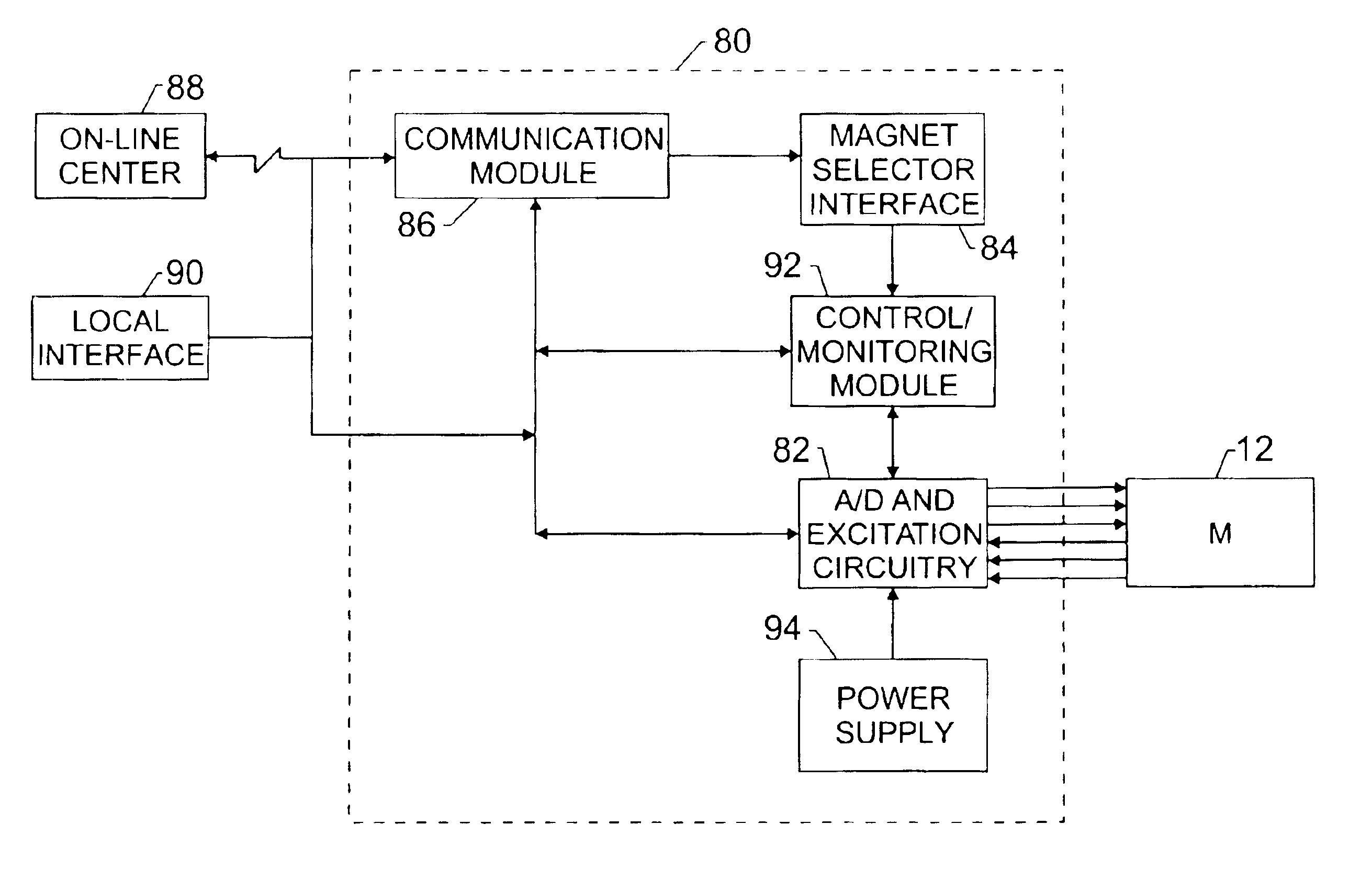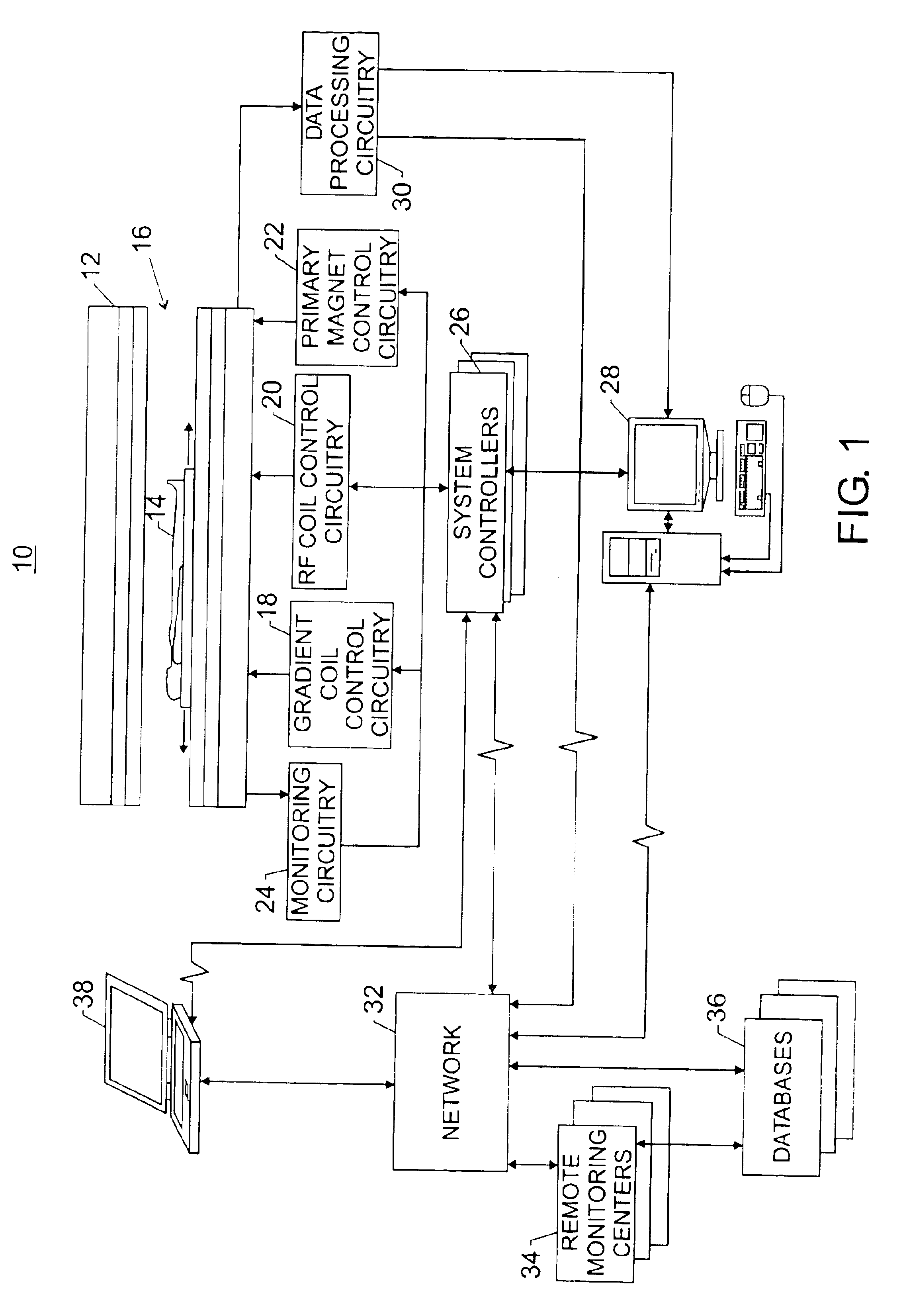Method and apparatus for monitoring superconducting magnet data
a superconducting magnet and data monitoring technology, applied in the field of medical imaging devices, can solve the problems of relatively high production and maintenance costs of cryogenic liquids, difficult maintenance of electromagnets, and loss of helium, so as to facilitate predictive maintenance, reduce maintenance costs, and reduce the effect of mri downtim
- Summary
- Abstract
- Description
- Claims
- Application Information
AI Technical Summary
Benefits of technology
Problems solved by technology
Method used
Image
Examples
Embodiment Construction
Turning to the drawings, and referring first to FIG. 1, an exemplary imaging network 10 is illustrated. Although the present technique is described with respect to a medical imaging device, it should be note that the present technique may be applied to any number of systems or devices that employ a cryogen cooling system, such as spectroscopy systems, nuclear accelerators, biological cooling facilities, and power transmission systems, to name but a few. The exemplary imaging network 10 includes a magnetic resonance imaging scanner 12.
To obtain diagnostic images of a patient 14, a medical professional may direct the patient 14 into a patient bore 16 of the MRI scanner 12. A main magnetic field (e.g., 0.5-2.0 Tesla) is generally present in the patient bore 16. This field, as discussed further below, is produced by a superconductive electromagnet (see FIG. 2) disposed circumferentially about the patient bore 16. The superconductive electromagnet is maintained at superconducting tempera...
PUM
 Login to View More
Login to View More Abstract
Description
Claims
Application Information
 Login to View More
Login to View More - R&D
- Intellectual Property
- Life Sciences
- Materials
- Tech Scout
- Unparalleled Data Quality
- Higher Quality Content
- 60% Fewer Hallucinations
Browse by: Latest US Patents, China's latest patents, Technical Efficacy Thesaurus, Application Domain, Technology Topic, Popular Technical Reports.
© 2025 PatSnap. All rights reserved.Legal|Privacy policy|Modern Slavery Act Transparency Statement|Sitemap|About US| Contact US: help@patsnap.com



